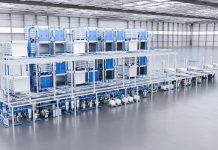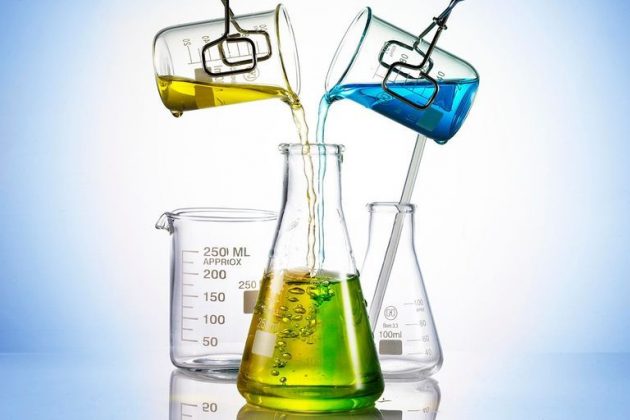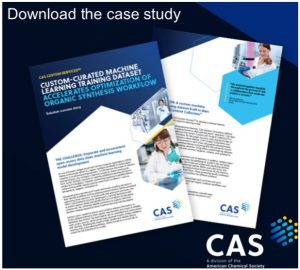This month our columnist takes a look at some recent advances in Hydrogen Fuel Cells, which are likely to power our vehicles in the near future. Fuel Cells have many advantages over battery in an automotive application but are expensive due to the use of a Platinum catalyst. Most of the current research is directed toward reducing or eliminating platinum.
With the Brent Crude firmly set on a northward journey, the time has never been riper to seriously look at alternatives for powering our vehicles. Many countries, including India, have already set the roadmap for switching over to electric vehicles as part of their larger commitment to the Paris Accord. Two technologies are available to provide the energy for electric vehicles – Batteries and Fuel Cells – and they are in healthy competition with each other. Most electric vehicles today use batteries, but the jury is still out on the matter. Fuel Cells have several important advantages over batteries, the most important of them being their higher energy density. The energy to weight ratio of Fuel Cells is at least 10 times more than batteries. Compared to battery-operated cars which need several hours for charging, Fuel Cell powered cars can be quickly refueled in minutes at hydrogen filling stations. While the battery technology is still evolving to extend the mileage between recharges, fuel cell powered cars are already miles ahead on this metric. The main bane of fuel cells continues to be their exorbitant cost. Fuel cell powered cars are at least twice as expensive as the average conventional car. Another related problem is the safety and cost of storing and transporting compressed hydrogen.
Fuel Cell
The first Fuel Cell, or “Gas Battery” as it was known then, was invented in 1839 by Sir William Robert Grove, who used Platinum electrodes. Platinum continues to be the mainstay of fuel cells and is the primary reason for their high cost. Grove’s invention never took off and lay buried for decades before it was resuscitated by NASA in the 1960s for their space programme. The fuel cell produced electricity and drinking water for the astronauts. A Fuel Cell is an electrochemical device that uses hydrogen and oxygen to produce power and water. Many different kinds of chemistries are available and the Proton Exchange Membrane (PEM) Fuel Cell is the most commonly used in vehicles. It uses a polymer as the electrolyte and platinum-based electrodes.
Platinum Catalyst
The main cost component of the fuel cell is platinum, which is used as a catalyst to speed up the chemical reaction between hydrogen and oxygen inside the cell. At the anode of the PEM fuel cell, hydrogen molecules are split into protons and electrons. The protons travel through the membrane to the cathode. The electron flow provides the external current before re-joining the protons and oxygen molecules at the cathode to form water. Both the reactions, especially the latter are sluggish and need to be speeded up by a catalyst if the chemical energy has to be converted into electricity at a rate useful for powering a car. Platinum has been the most widely used catalyst. The Platinum requirement for the cathode is nearly 10 times as much as for the anode.
Alternative Materials
Efforts to develop a cheaper alternative to platinum have been underway for several years now. Researchers at the University of California have developed a catalyst made out of porous carbon nanofibers embedded with compounds of cobalt, nickel or iron. The cost of these alternative materials is at least two orders of magnitude lower than platinum. Another band of researchers from the University of Wisconsin – Madison also use cobalt catalyst but in an entirely unique way. The problem with using less expensive metals like cobalt as catalysts are that they have to be used in much larger quantities. This lowers the efficiency of the cell. To overcome this problem, this team packed the cobalt catalyst into a separate reactor located adjacent to the fuel cell. Quinone is used to transport the electrons between the fuel cell and this reactor. Since Quinone degrades into a tarry substance after repeated use, the trick was to develop a stable derivative of quinone to perform this job. Much improvement, however, needs to be carried out on this design is currently the energy output is only a fifth of what a conventional fuel cell produces. A team from the University of Delaware have experimented with a non-platinum catalyst. They have used nanoparticles of tungsten carbide and claim that this not only brings down the cost of the cell but also improves the life of the membrane.
Catalyst Structure
Another approach to lower the cost of fuel cells is to reduce the quantity of platinum, by alloying it with other metals. Researchers at Brown University have alloyed platinum with cobalt in nanoparticles. Initial testing showed that the alloy catalyst performed better than pure platinum, but over prolonged use, cobalt got leached away rapidly. The research team developed a special lattice structure to address the leaching problem. While the outer shell is made from pure platinum, the inner core consists of alternate layers of cobalt and platinum. After successfully testing the new catalyst structure in a laboratory setting, the team tried it out in the real environment of the fuel cell, which is hotter and more acidic. This testing showed great promise as it beat the targets set by the US Department of Energy for initial activity and long-term durability.
Auto Industry
While scientists and engineers are racing to improve the economics of the hydrogen fuel cell, it also has the backing of Toyota, world’s foremost automobile manufacturing company. Toyota is betting big on the Hydrogen Fuel Cell, as opposed to some others like Tesla and Nissan who are pursuing the battery option. Having pioneered the mass production of the first fuel cell powered car, Mirai, in 2014, Toyota now plans to ramp up the production ten-fold to 30,000 units by 2020. Toyota has also developed a fuel cell powered truck. Market analysts say that it is this long haul segment, where the customers demand more range between charging, that makes the optics of fuel cells better than batteries. And just last month, the world’s first hydrogen-powered train started operation on a 60-km track in Germany. Alstom plans to build more such trains as several European countries have expressed interest.
Notwithstanding the current popularity of battery-operated vehicles, a survey shows that automobile industry leaders have more faith in Fuel Cell technology. It is expected to attract significantly higher investment in the years leading to 2025. At least 10 other automakers, including Honda, Mercedes, and BMW, are planning to roll out fuel cell cars by 2021. Advances in chemistry, catalysts, and materials will play a significant role in this evolution of transport.
Reader’s responses may be sent to k.sahasranaman@gmail.com or chemindigest@gmail.com































